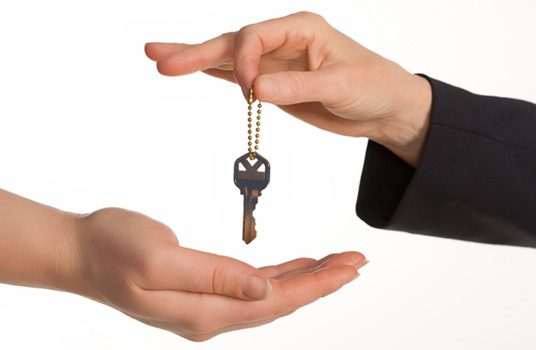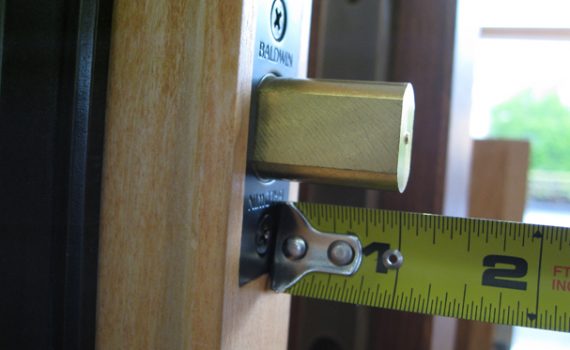What Type of Electronic Deadbolt to Get
Category : Locksmith

Key Override
Some electronic deadbolts have the option to have a key override. If you lose your keys often, a key override might not be exactly what you’re looking for. Having a key override is useful in the event that the batteries in your electronic deadbolt go dead before you have an opportunity to change them. If the key is not present, it is possible that you could be locked out.
Electronic deadbolts that do not have a key override will normally have two posts that are to be used with a 9V battery. When the battery is applied to the two posts it will temporarily power the electronic deadbolt. Powering the deadbolt this way will allow operation of the lock so that you are not locked out. However, this does require access to a 9V battery.
Remote Capabilities
These are electronic deadbolts that have the ability to be controlled without touching the lock itself. Some can be controlled from anywhere in the world and others from only a few feet away. The locks use different technologies such as Bluetooth, z-wave, or WiFi. Generally, electronic deadbolts that use WiFi or z-wave technologies can be controlled from anywhere in the world. The electronic deadbolts using Bluetooth are usually controlled from within a few feet. This isn’t always true since a mix of technologies can be found in some electronic deadbolts, giving them the options of using both forms of remote control. Some electronic deadbolts also come with options of bio-metric scanning or using RFID devices to trigger the lock to open.
At the end of the day, it is important to make sure you do some research when it comes to getting an electronic lock. This covers the items that people ask about the most. Aesthetics are also another area that people consider when getting an electronic deadbolt. Finding the right look with the right options for your application could prove challenging to some. Sometimes you may want a specific finish, and what could have been the perfect lock may not be offered in that specific finish. Either way, hopefully the little bit of information here has proven useful.
My Recommendations
I tend to strongly recommend electronic deadbolts by Schlage. While it is only my opinion, they seem to last longer and fail less than other brands from the big box stores. While I mention only 3 electronic deadbolts and only those by 1 brand, there are many other good ones. The 3 I mention are certainly not the end all be all suggestions.
Fairly new and gaining popularity it seems is Lockly, which I have become pretty fond of. If I liked the idea of biometric entry, this would be the lock for me. It is the only one I trust with as many forms of possible credentials to get a lock open. Lockly also has a very neat approach to privacy and distant prying eyes. The numbers are scrambled each time you activate the keypad so the location of your combination is different each time you use it.
Without bells and whistles
These are my recommendations for electronic deadbolts without all of the bells and whistles. I recommend the Schlage BE365 for a lock that has a key override. If you do not like the idea of having a key override, then I would suggest the BE375. Both of these locks will allow the user to program and delete codes in order to allow or deny access to users. I have installed many of these locks. They are robust and last a long time. Other than people letting batteries die, even with fair warning, I haven’t personally seen one of these fail out in the field.
The batteries last long enough in these models that I have almost forgot they ever needed changing. I have family members that use this lock that ask me to change them when its time. I think I have changed the batteries 2 times in the past 5 years. The way these locks work give way to longer battery life. The lock itself doesn’t push and pull the deadbolt which in turn causes much less strain on the batteries.
With all the bells and whistles
The Schlage Encode is my go to for an electronic deadbolt that has all of the bells and whistles. It has a key override and connects directly to WiFi instead of using a gateway. The Schlage Encode, paired with the Schlage Home application, allows for complete control of the electronic lock.
From the application you can see what codes are used to access the property and when. You can create access schedules for times and days. For example, if you assign 1234 to a house cleaner, you can make that code only active on the days and times that they are supposed to be there. The application also give you the ability to lock and unlock the door with just the press of a button.
What do I use?
The Schlage Encode is the electronic lock that I personally use. However, there exists no bias since I have used and only stopped using many others because of failure. To further drive this point home, I will not even mention the others that I have used, so as to not bash them. I have had some fail because of condensation and some were just dead on arrival. Some I didn’t like simply because of how confusing it was to add or delete users. I like simplicity, and this lock hits that mark without issue.
For me, battery life with this type of lock is pretty good, even with all the bells and whistles (which normally lessen battery life). I personally have to change the batteries once a year, YMMV.









 only after everyone is off your hit list do you realize that you were the last one in possession of said keys.
only after everyone is off your hit list do you realize that you were the last one in possession of said keys. 
 be honest. As a property manager, your main focus and goal is to find and place tenants in properties and take care of many other day-to-day operations concerning each property.
be honest. As a property manager, your main focus and goal is to find and place tenants in properties and take care of many other day-to-day operations concerning each property.



